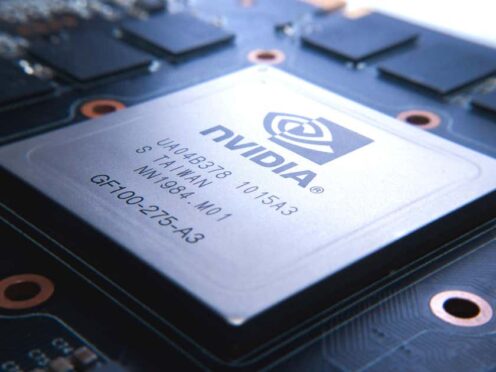
Nvidia, the US computer chip firm, has moved ahead of tech giants Microsoft and Apple to become the most valuable company in the world.
Here is a look at how the California-based company achieved this.
– What has happened?
On Tuesday, Nvidia’s share price hit nearly 136 US dollars (£107), giving the company an overall valuation of 3.34 US trillion dollars (£2.63 trillion).
This made the company more valuable than Microsoft, having also overtaken fellow tech giant Apple earlier this month, and become the most valuable company in the world.

– Why has the firm become so valuable?
A computer chip giant previously best known for making graphics cards, Nvidia has in recent years come to dominate the market in artificial intelligence (AI) chips – specifically those needed to train and run the powerful AI models that run generative AI software such as OpenAI’s ChatGPT.
Generative AI has become the key battleground in the tech space over the last 18 months, with some experts saying it could be as pivotal an innovation as the internet itself in the years to come.
The excitement around the technology has sparked a battle between some of the world’s biggest companies – Apple, Amazon, Google, Meta, Microsoft and others – to build new AI products.
With Nvidia as the key maker of AI chips, this has substantially boosted the firm’s sales and profits, with its stock price further helped by some investors believing it could go higher, with demand for AI expected to increase further.
– How fast has Nvidia’s value grown?
While its share price has been steadily rising for several years now, it has only been this year that it truly took off.

Its value has more than doubled in 2024 to now sit at nearly 136 US dollars a share.
In contrast, at the beginning of 2023, it was priced at less than 15 US dollars a share, and five years ago it was less than four US dollars.
– Is it likely to keep growing?
Many investors believe the demand for AI is only going to increase, meaning Nvidia’s value could rise still further, with some believing the company is now in a direct race with Microsoft and Apple to be the first to reach a four trillion US dollar valuation over the next year.
But others have questioned whether further big gains in the future are likely, given the increasing competition it is and will likely face in the months and years to come as tech giants begin to build and use their own AI chips, existing rivals catch up and new firms emerge as key players in the AI chip market.

Enjoy the convenience of having The Sunday Post delivered as a digital ePaper straight to your smartphone, tablet or computer.
Subscribe for only £5.49 a month and enjoy all the benefits of the printed paper as a digital replica.
Subscribe